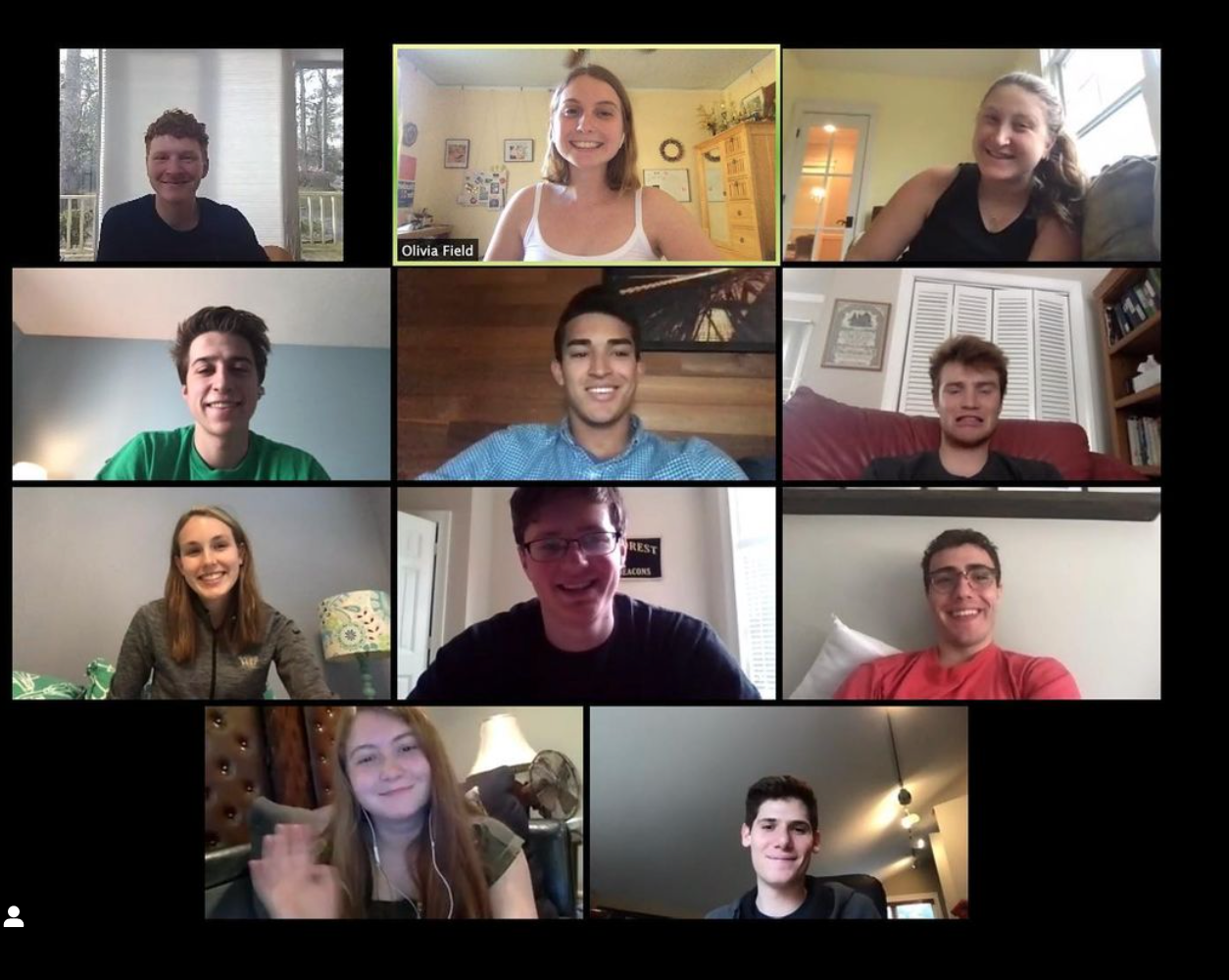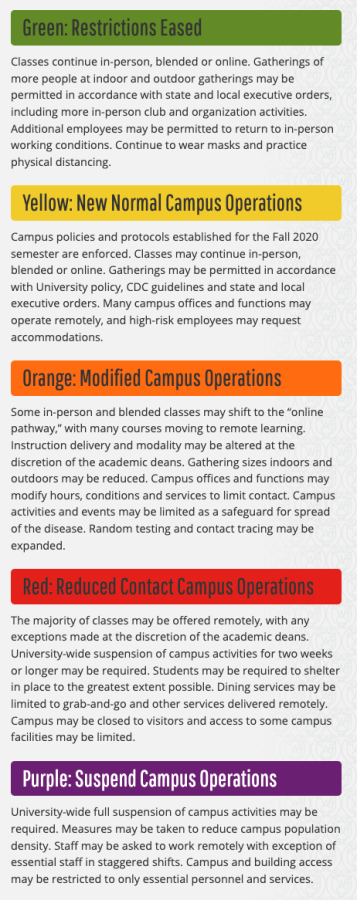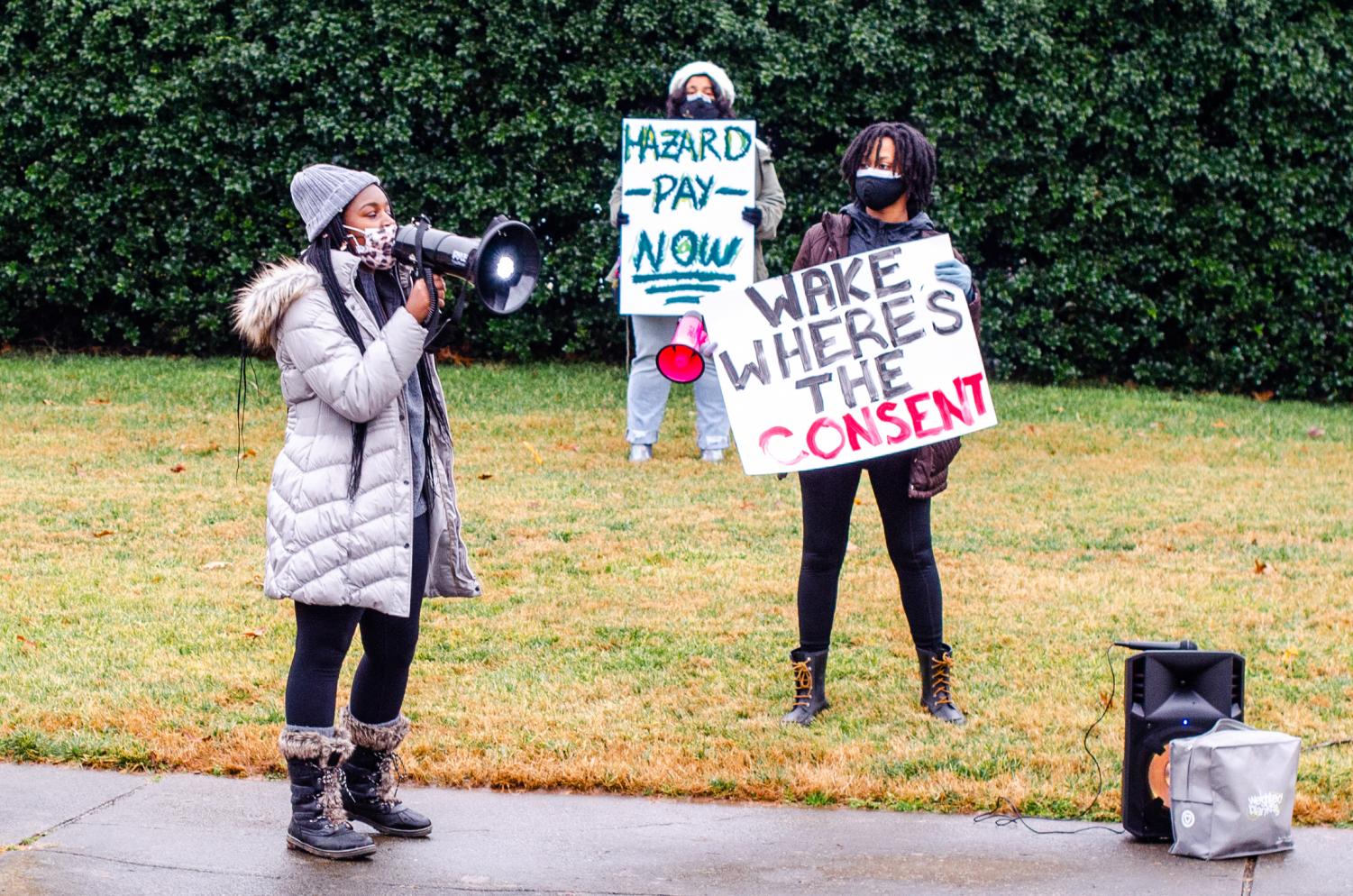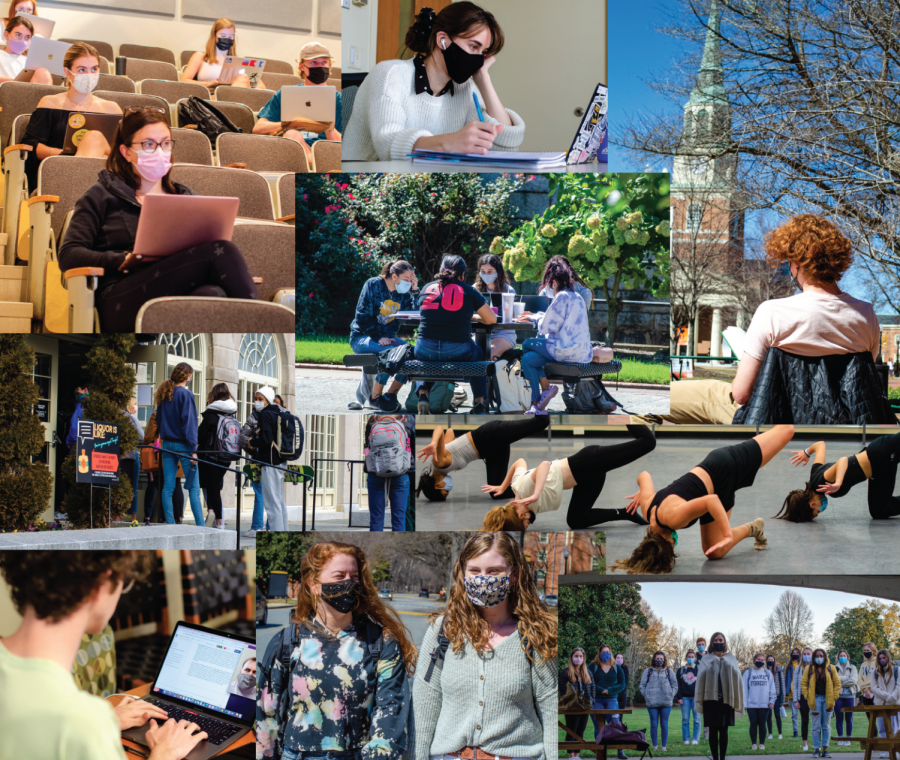The days the world shut down
Wake Forest students recall March 2020 and the chaotic semesters that followed
The photography of Katie Fox (front center), shows campus life during the height of COVID-19 (Collage: Daniel Parolini).
March 16, 2023
At Wake Forest, everyone knew that March 6, 2020, was the last day of classes before spring break. However, few imagined that it would be the last day of in-person classes for the Spring 2020 semester.
There were some warning signs. The previous day, the Old Gold & Black ran a front-page story reporting that students studying abroad at Casa Artom in Venice, Italy, were sent home. This raised some alarm from students, but most seemed confident that, at least by April, Wake Forest would return to in-person classes.
A Tale of Two Student Leaders
One such conversation played out in the Old Gold & Black office, according to the Editor-in-Chief at the time, Olivia Field (‘21).
“I remember talking to some of the other editors, specifically Andy Killebrew, who was one of the Life editors and Jack Portman, who was one of the Opinion editors, and they were like, ‘oh, yeah, that’s the end of the world, it was nice knowing you guys,’” Field said. “[They also said:] ‘You know, we’re not coming back after spring break.’ I remember joking around with them and not really taking what they said seriously.”
On March 11, 2020, the Old Gold & Black reported that after an extra week of spring break, all Wake Forest classes would be held virtually for the remainder of the semester. The previous day, the News & Observer reported that the Wake Forest administration asked professors to look into virtual teaching that could extend through the Fall 2020 semester.
Mellie Mesfin (‘20), who was student body president for the 2019-2020 academic year, was in Mexico for spring break when the news about classes broke. She and her friends debated returning to campus for the remainder of spring break or staying in Mexico.
“I remember talking to friends and realizing that everything was just going to have to be a day-to-day, intuitive decision because there was no right answer that anyone could provide,” Mesfin said.
Both she and Field had to consider how their respective organizations could continue operating virtually. The Old Gold & Black already published all of the articles it printed online, but the camaraderie of the Old Gold & Black office was not so easily digitized.
“It was an adjustment,” Field said. “As I’m sure everyone who has participated in a group activity knows, not being able to be in person and brainstorm together or be creative together — that’s a challenge.”
Field continued: “How [did] we recreate the newsroom in a virtual setting? It was a ton of Zoom meetings, a ton of using Google Drive and online resources that we never really took advantage of.”

Mesfin faced issues with the transition, too. For one, Student Government’s spring elections, during which the student body selects its executive officers and sophomore, junior and senior senators, were scheduled for just after spring break.
“So we started planning for virtual Student Government elections, which meant new rules and different challenges,” Mesfin said. “And we had to field questions at every stop and to some extent, adapt things as we went because no one had been in this situation.”
For Mesfin and her fellow seniors, though, it was hard to balance one’s responsibilities and the feeling of loss that came with having one’s senior year cut short.
“[Some of] my friends were super, super anxious or super upset and really grieving the loss of those precious last few months of being a senior in college,” Mesfin said.
Part of those precious months, as Mesfin points out, involve transitioning leadership positions, finishing classes and finalizing post-graduate plans.
“A lot of my peers and I missed the camaraderie and celebration that goes with [those moments],” Mesfin said
As Mesfin and Field worked to serve the Wake Forest community, the community continued to expand. By March 21, 2022, the Class of 2024 received their acceptance letters. Most of them had their senior year of high school similarly cut short, and many were apprehensive about their first few semesters of college. While most Class of 2024 members came to campus in Fall 2020 for a mix of online, blended and in-person classes, some stayed home. Some then-sophomores also stayed home, like Marilla Morrison (‘23).
“Though being stuck at home with my two parents and three siblings was not ideal for a first-year college student having just gotten a taste of freedom, it seemed safer than putting my life in the hands of hundreds,” Morrison told the Old Gold & Black in writing. “Already I was dealing with the feelings of helplessness, confusion and betrayal as many of my friends had different standards than my family (in terms of even outdoor, socially-distant small gatherings). It felt like I could no longer rely on the people who I thought I could trust with my life before the pandemic.”
Morrison believes she made the right choice, saying she has never tested positive for COVID.
Fall 2020, Spring 2021 and Beyond
But most of the campus settled into a new normal. Mandatory testing, quarantines and Zoom screenings quickly became a way of life. Gathering limits were imposed by Campus Life officials, and those who broke them faced disciplinary action. Masks were required not only in classes and academic buildings but everywhere, including outside. A dashboard, which was in place up until the Fall 2022 semester, kept track of COVID-19 cases on campus.

For the 2020-2021 academic year, university operations were classified by a color system. Green meant the pandemic was over. Yellow meant that everything operated as “normal” but with social distancing and some limits on gathering sizes. Orange meant limited hours for campus offices and further restrictions on gatherings and movement. Red meant, essentially, a two-week period of isolation in dorms with extremely limited on-campus services. Purple would mean sending everyone home. For the entire period the color system was in effect, Green, Red and Purple were never reached. Current campus operations in 2023 at the time of publication, however, would be the university’s status quo under a Green operating system.
On Oct. 22, 2020, the university ramped up its COVID-19 restrictions. In-person dining was suspended at all campus dining halls, and all planned, in-person gatherings were moved online or canceled. Homecoming was moved online, and since student attendance at sporting events was suspended, Wake Forest athletics teams played in vacant stadiums. This was the dawn of Orange status on campus. These restrictions remained in place until Thanksgiving break, after which students remained home to mitigate post-holiday spread of COVID-19. The university also revealed in its Spring 2021 calendar that there would be no spring break.
Students returned to Winston-Salem for a delayed Spring 2021 semester — the first day of classes was Jan. 26. Eleven days later, COVID-19 restrictions increased again, creating what many students not-so-affectionately referred to as “Burnt Orange” status. Under “Burnt Orange,” the Z. Smith Reynolds Library closed, visitors were completely banned from dorms (i.e. only a student and their roommates could be in their room), dining once again moved to take-out only and student organizations were banned from meeting in-person. This caused wide disruption. For example, during those weeks, the Old Gold & Black did not publish a print edition because students were barred from the organization’s office.
Meanwhile, COVID-19 cases remained high, and the university acquired more hotel space for quarantining students who could not find rooms in on-campus living spaces. On Feb. 13, 2021, students held a protest at the University Parkway gate to demand increased safety measures from the administration — many resident advisers, who organized the protest, were especially concerned about hazardous working conditions in their halls due to the virus.
“It seems like time and time again, the university is choosing ‘pro dinero’ over ‘Pro Humanitate,’” Pheng Pickett (‘22) told the Old Gold & Black at the protest. “There’s just a real lack of care for the welfare of students in more than one way.”’
Student mental health, especially with no spring break to look forward to, began to worsen.
“To be blunt, [mental health is] not good, at least for myself and the people I spend my time with,” junior Caroline Parrish told the Old Gold & Black for a Feb. 25, 2021, article. “It’s difficult to find places to spend time with friends (especially if the weather is bad), and being completely alone for days at a time feels like punishment for a crime I didn’t commit.”

Eventually, on Feb. 22, 2021, “Burnt Orange” was lifted. In early March, student employees became eligible for the COVID-19 vaccine (the university would later require the COVID-19 vaccination and booster doses for its students). Later that month, the university returned to Yellow status, where it had begun the Fall 2020 semester. Almost exactly a year later, the university lifted its indoor and classroom mask mandates, though until Fall 2022, professors were able to require masks on an individual basis. In Fall 2022, the case dashboard was also taken offline.
For Morrison, Wake Forest life is similar to how it was in her first semester — Fall 2019.
“Wake Forest feels more the same than different…the daily campus life still feels as timeless as it did when I arrived [in August 2019],” Morrison said.
Three years on from mid-March 2020, COVID-19 restrictions have been lifted, but the world and Wake Forest were profoundly impacted. Throughout this issue, you will find stories of how Wake Forest and its community have changed in the three years since the world shut down.















